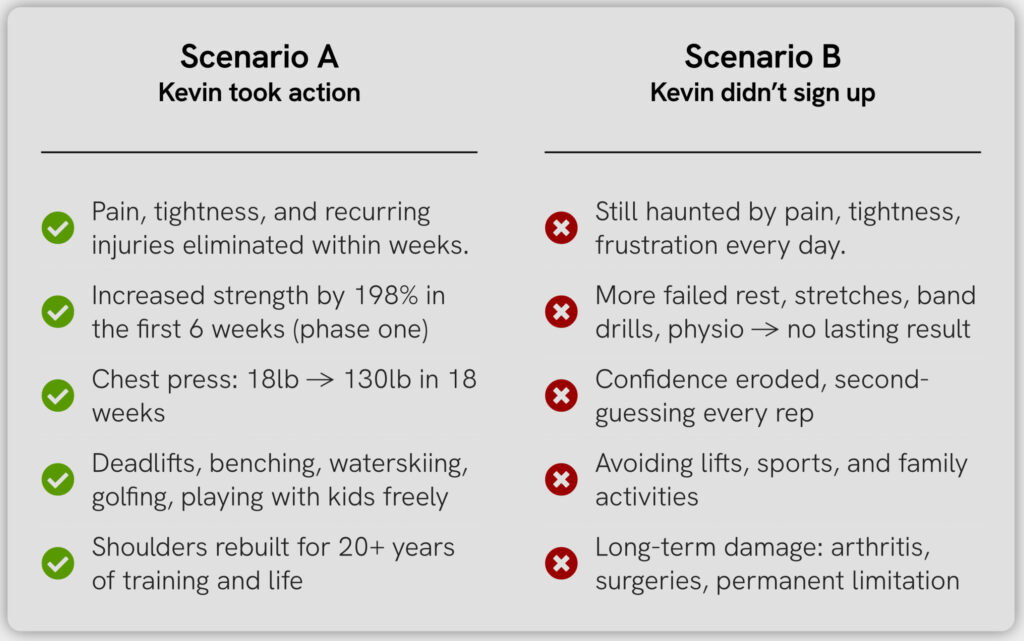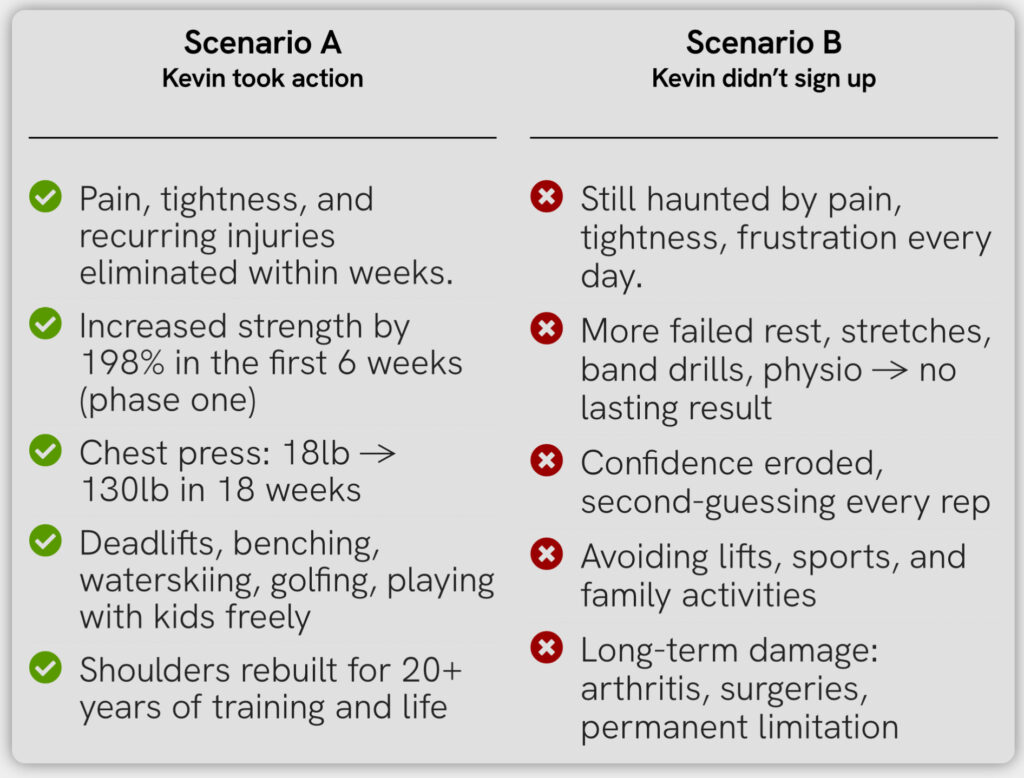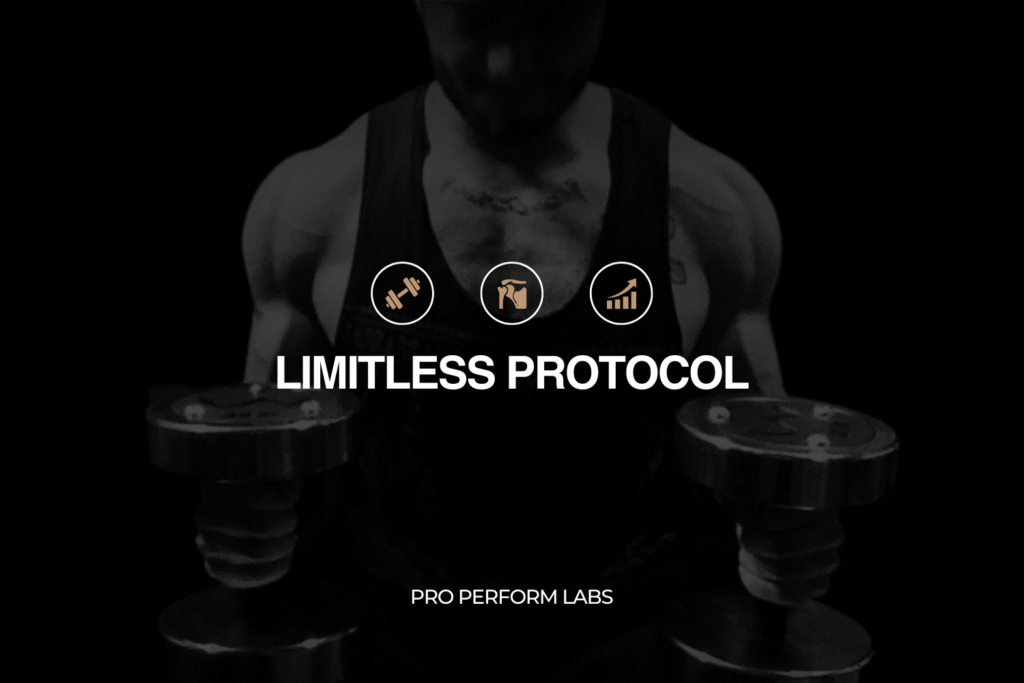THE REAL PROBLEM
You’re strong, disciplined, and training is part of who you are.
But your shoulders don’t match that standard.
Pain, tightness, instability — it’s not just physical.
It’s:
The fear of pushing too hard and breaking down again.
The frustration of wasting more time and money on fixes that don’t last.
The creeping belief that “maybe this is permanent… maybe I’m broken.”
Most people hope it’ll go away. They rest, stretch, or see another physio.
But inaction isn’t neutral. It’s slow decline.
What Happens If You Wait
Here’s what happens if you don’t solve it properly:
Permanent loss of capability → movements you once crushed now feel off-limits.
Recurring setbacks → you’re one rep away from another flare-up.
Decline with age → every year you wait, you get weaker, stiffer, and closer to surgery.
Identity loss → from being “the strong one” to feeling fragile, sidelined, or irrelevant.
Family & lifestyle limits → avoiding sports, playing with your kids, or even sleeping comfortably.
And every month you delay, the gap only widens.
KEVIN’S STORY (19 YEARS STUCK)
Kevin lived this reality for 19 years.
2 surgeries.
Multiple physios.
Countless stretches and band drills.
Every attempt left him back where he started… frustrated, hesitant, and secretly fearing his best days were behind him.
Until he decided to do something different.
- Phase 1: Restore — 6 weeks directly addressing weak links and joint pain → his strength jumped 198%.
- Phase 2: Excel — He went from chest pressing 18lb to 130lb in 18 weeks, a 7x increase. Pain-free. Confident. Strong.
- The Result — For the first time in nearly two decades, Kevin was deadlifting, benching, waterskiing, golfing, and throwing his kids around without hesitation or fear.
The Truth About Inaction
Kevin proves what’s possible when you stop hesitating and rebuild properly.
But the harsh truth is… most people never get here.
Not because it’s impossible, but because they wait.
Instead, they stay stuck in limiting beliefs like:
“Rest will fix it.”
“I should avoid heavy lifting forever.”
“If it doesn’t hurt in daily life, it’s fine.”
“Rehab has to be slow and boring.”
“Surgery is inevitable.”
“Programs are all the same.”
Those beliefs keep them fragile, hesitant, and on the road to permanent decline.
Two Scenarios: Which One Is Riskier?
I’m so proud of how far Kevin has come, and I often think about where he would be right now if he DIDN’T sign up to work with me…


The only difference between these two paths?
Kevin took action.
Which side of the table do you want to be on in 3–6 months?



